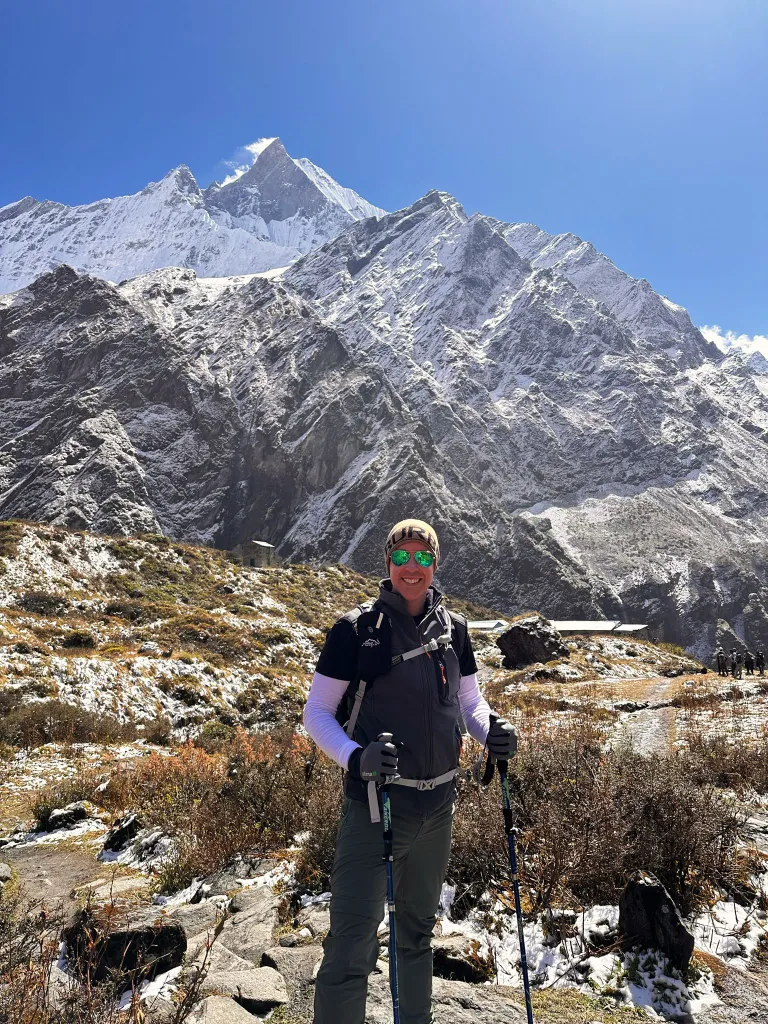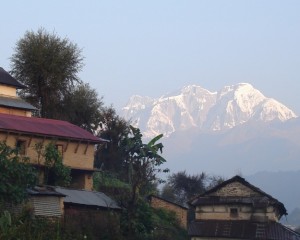Top 5 Peak Climbing Destinations in Nepal
You are a climber looking for a new adventure in peak climbing. Nepal holds an irresistible allure for mountaineers worldwide, with a landscape decorated with majestic peaks and unparalleled beauty. But does Nepal have the peaks for those adventures?
Nepal is a country with mountains and peaks, challenging terrain, and rewarding views. Each peak promises a unique and exhilarating experience.
Now, let's embark on a journey to discover the top peaks in Nepal that are a climber's paradise.
Best Climbing Peak in Nepal for Climbers
Among Nepal's towering peaks, different stands out as the ultimate adventure. They are loved for their accessibility, breathtaking views, and thrilling climbs. Let us dive into the five best climbing peaks in Nepal.
Island Peak (Imja Tse) - 6,189m

Island Peak is a prominent trekking peak in the Everest region of Nepal. At 6,189 meters, it is a thrilling climb for adventurers.
From its summit, climbers are rewarded with breathtaking panoramic views of Mount Everest and the surrounding peaks.
What sets Island Peak apart is its moderate difficulty level, which makes it accessible to climbers with basic mountaineering skills. This makes it an ideal choice for those seeking an exhilarating challenge without the need for extensive technical expertise.
Mera Peak - 6,476m

Mera Peak attracts adventurers with its promise of a thrilling yet achievable ascent. It is also renowned for its moderate climb and spectacular slopes. It offers climbers a gateway to stunning landscapes and breathtaking vistas.
Despite its moderate difficulty level, Mera Peak presents a challenge that attracts adventure enthusiasts eager to test their limits.
Mera Peak's popularity among climbers stems from its unique blend of accessibility and challenge. It is for those who want to discover the exhilaration of scaling one of Nepal's most iconic summits.
Lobuche Peak - 6,119m

Lobuche Peak is a gem in the Khumbu region of Nepal. At 6,119 meters, it offers climbers a captivating journey through one of the world's most renowned mountain landscapes.
While perhaps lesser-known compared to its famous counterpart, Island Peak, Lobuche Peak promises an equally rewarding climb for adventurers seeking a more secluded experience.
From its summit, climbers are treated to breathtaking views of Mount Everest and its neighbouring peaks, immersing themselves in the beauty of the Himalayas.
With its pristine beauty and challenging ascent, Lobuche Peak invites climbers to start an unforgettable climbing experience through the heart of the Khumbu region.
Yala Peak - 5,500m

Yala Peak is situated in Nepal's Langtang region and stands at 5,500 meters. It invites climbers with its accessibility and stunning vistas. It's renowned for its moderate difficulty level.
From its summit, climbers are rewarded with panoramic views of the Langtang region, which consists of lush valleys, snow-capped peaks, and scenic landscapes. Yala Peak offers a practical yet advantageous climbing experience.
Yala Peak is a journey of exploration and discovery amidst the breathtaking beauty of the Langtang region.
Chulu West Peak - 6,419m

Chulu West Peak stands at 6,419 meters is a challenge between the breathtaking landscapes of Nepal's Annapurna region. Its rugged beauty and demanding climb attract seasoned adventurers seeking an exhilarating mountaineering experience.
From its summit, climbers are treated to close-up views of the majestic Annapurna and Dhaulagiri Ranges, with a panorama of some of the world's highest peaks.
Despite its challenging ascent, Chulu West Peak remains popular among experienced climbers, drawn to its rugged terrain and the thrill of conquering its heights.
Tips to prepare for peak climbing in Nepal
- Physical Fitness:
Prioritize cardiovascular exercises, strength training, and endurance activities to build stamina and strength for the demanding climb.
- Altitude Acclimatization:
Gradually ascend to higher altitudes to allow your body to adjust to reduced oxygen levels
- Technical Skills Training:
Learn and practice essential mountaineering techniques such as rope handling, ice climbing, and crevasse rescue to navigate challenging terrain safely.
- Gear Preparation:
Invest in high-quality climbing gear, including mountaineering boots, crampons, harnesses, and helmets, and ensure it's properly fitted.
- Nutrition and Hydration:
Maintain a balanced diet and stay hydrated before and during the climb to fuel your body with the necessary nutrients and fluids for optimal performance.
- Mental Preparation:
Develop mental resilience and a positive mindset to overcome challenges and setbacks during the climb.
- Safety Measures:
To prioritize safety at all times, familiarize yourself with emergency procedures, carry essential safety equipment, and stay informed about weather conditions and route hazards.
To wrap up, Nepal offers a wealth of peak climbing opportunities with its own unique challenges and rewards. The climbing destinations in Nepal—Island Peak, Mera Peak, Lobuche Peak, Chulu West Peak, and Yala Peak—show the diverse range of experiences available to adventurers of all skill levels. Join us at Nepal Vision Treks and immerse yourself in the natural beauty and cultural richness of the Himalayas.
FAQS






